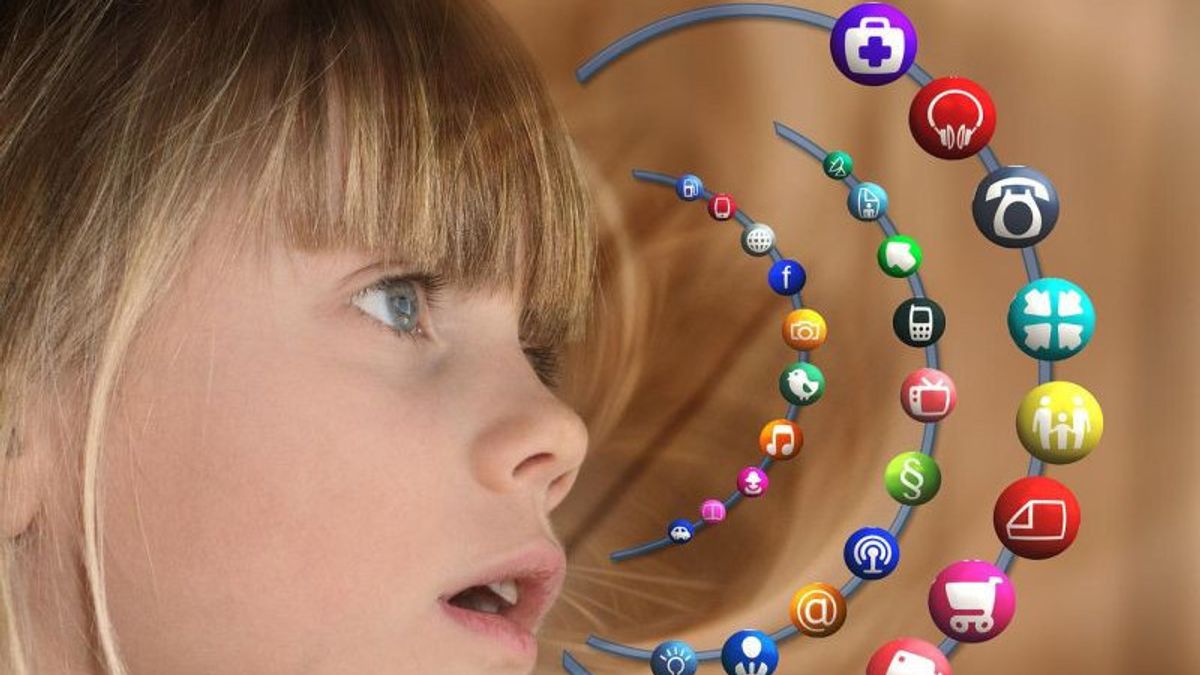JAKARTA - There are positive and negative impacts from the use of social media. In children, as they age and develop, they also experience developments in their cognitive thinking.
Commemorating National Social Media Day, psychologist Endang Retno Wardhani, MBA., PhD., CHt., from the Indonesian Positive Psychology Association explains the impact that arises from the use of social media on children and adolescents. "At an early age, of course things that can be understood are concrete, easy, practical, and not too complex," Dhani said as quoted by ANTARA, Saturday, June 10. Children tend to follow the behavior of their closest people, including their parents, in doing something. In social media, most adults will carry out these activities anytime and anywhere. Not infrequently, children can easily access cyber content because of the mimicking process carried out by parents or adults to them. If done with adult assistance, children will find it easier to get positive information from the use of social media. For example, films or animations that are widely found on social media can provide value positive for children because of the content of the story in it. On the other hand, if access to social media is not used properly, the negative information in it will actually make children's behavior untrue. For example, imitating scenes or harmful things from social media content they find. Children tend not to be able to digest what is right and wrong from social media content. Although most social media is intended for children aged 13 years and over, not a few children are in these underages already have their own social media or access content from their parents' social media. Therefore, adult assistance to children is important so that information on social media can be filtered properly. Social media standards for parents and children Endang Psychologist Retno Wardhani said children will grow up according to what they experience in their daily lives. Habits that have been built since childhood tend to continue to be carried out until they adults. If children are not limited from one thing to another, in this case using social media, they will get used to this unlimited pattern. Parents must also be able to adjust the time Time on screen or when children have to use the device. Dhani also suggested that parents make a special schedule for their children to find out at any time they can access social media on their devices. Parents can make a creative daily schedule, both with pictures or others so that children can digest the rules of the schedule more easily. Create restrictions, for example in early childhood using a picture of a cellphone is placed at any time. For example, in the afternoon," said Dhani. For school-age children, apart from the daily schedule, parents can also have direct dialogue with their children about the time to access their social media. That way, children will better understand and are expected to be able to comply with the schedule well. Don't forget to accompany and Keep an eye on children when they access social media so they don't access negative content. Regarding the ideal age of children accessing social media, this goes back to content that suits their growth and development age. The greater the age of children, the greater the understanding of children in their cognitive development.
Therefore, children's understanding of content is one of the benchmarks whether they can access it or not. Parents can make privacy arrangements so that children avoid negative content. Currently, social media is also often used in the world of education to help the learning process of children and adolescents. Dhani also advised, in addition to parents accompanying children and adolescents in accessing social media, teachers and educators also have a role in it. Teachers can socialize how to be wise in social media, for example telling things that are permissible and should not be accessed from social media. Teachers can also create tasks for students related to social media so that they can learn directly in the social media room. They (children and adolescents) are expected to learn to choose, which one is needed and which one is not needed,' Dhani explained.
The English, Chinese, Japanese, Arabic, and French versions are automatically generated by the AI. So there may still be inaccuracies in translating, please always see Indonesian as our main language. (system supported by DigitalSiber.id)








